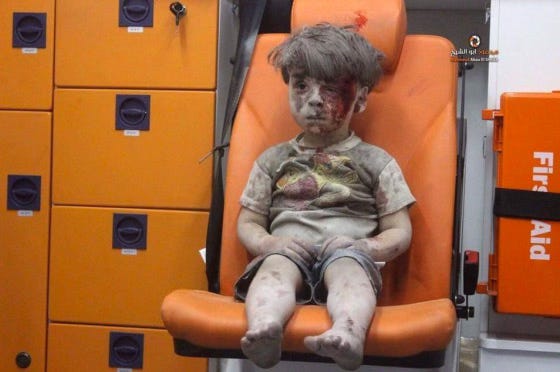
When a child is raised in a home of emotional balance, the scaffolding of their world is secure. Conflict doesn’t shatter them—it shapes them. They learn to speak their feelings aloud and are met not with shame or silence, but with a parent's steady gaze and an open heart. These children grow up with the quiet confidence that storms will come, yes—but they won’t be alone in the rain. They know that difficulty is not devastation, and challenge is not catastrophe.
But what happens when the opposite is true?
What happens to the millions of us—me included—who grew up in a home where chaos was the norm, not the exception? Where the emotional landscape was not balanced and warm, but volatile, punishing, and cold?
Enter: emotional dysregulation. The black hole where emotional balance should be.
For a dysregulated child, the world is not a playground but a battlefield. Every perceived rejection is a grenade. Every disappointment from someone they love slices as deep as betrayal. If someone we adore even seems disappointed in us, it can feel like they've driven a dagger into the softest part of our hearts. And I mean that literally. There is no exaggeration in the dysregulated mind. There is only intensity.
The emotional spiral is relentless. There’s no brake, no seatbelt, no shoulder to lean on as the mind careens into despair. And when it crashes? Behaviours follow—coercive, self-destructive, sometimes violent against the self. Suicide ideation creeps in like a thief in the night, seducing you with promises of silence and stillness. Self-harm becomes a kind of Ctrl-Alt-Delete. The body, in pain, distracts the mind from a horror movie it can’t switch off.
And society? Society looks on and calls you selfish. Cowardly. Attention-seeking.
But let me ask you this—have you ever tried to sleep while your brain replays your abuse in high-definition? Have you tried to eat, to laugh, to live, while your inner child is screaming beneath the weight of unspeakable memories? Of watching your mother be beaten? Of being sexually violated by someone who was meant to love you?
These are not memories. They are flashbacks, living things. And they do not ask your permission before arriving.
I remember the photo of Omran Daqneesh—the little Syrian boy pulled from the rubble after a bombing raid, his face covered in dust and blood, sitting in silence on that orange chair. I remember sobbing, because in his silence, I recognised my own. My own five-year-old self. The stunned expression of a child who has seen something no one—no matter how small—should ever have to survive.
I want to say this clearly: I don’t think suicide is cowardice. I think sometimes, for the broken, it feels like the only way to stop the bleeding—when the bleeding is inside your mind. And the people I’ve known, especially the men, who have taken their own lives? They were not selfish. They were tired. Tired of pretending. Tired of carrying the weight.
A few years ago, I nearly became one of them.
It was after I severed contact with my father—my abuser. And yes, I expected elation. Freedom. Triumph. But instead, I felt amputated. A phantom limb of the man who raised me haunted my every step. I was unmoored. Alone for the first time. And terrified.
The old voices returned. The seductive whisper: You’re worthless. Just go. I found myself in the garden shed, checking the strength of the beams, rope in hand, weighing my own life against the pain I couldn’t silence. What stopped me wasn’t hope. It was Sam. My wife. The thought of her finding me. I couldn’t bear it.
Later, in the car, I confessed everything. Sam held my hand and told me something I’ll never forget: “You have my permission to leave… but I’m not ready to lose you. I love you. You are worth staying for.”
Even then, my brain fought her words. My brain said she was lying. That she had to say those things. But somewhere, beneath the din of my trauma, her love landed. It didn’t fix me. But it reached me.
Emotional dysregulation is a nervous system screaming at you to run, fight, freeze, or fawn. Dr Dan Siegel, in Mindsight, calls this our window of tolerance—the zone where we can manage life’s trials without becoming overwhelmed. Children from safe homes build wide windows. The rest of us build walls.
When dysregulation takes over, even small stressors—a broken-down car, being late to work—can feel like existential threats. The body responds with rapid breathing, tightness in the chest, a sickening flood of adrenaline. Panic, grief, rage—all arrive uninvited.
But there’s a way back.
Through therapy, I’ve learned to feel the signals. To close my eyes. To breathe. To coax my body from the flaming forest of fight-or-flight into the cool river of rest and regulation. I scan for where the tension lives—jaw, chest, belly—and invite release. I remind myself: The car hasn’t killed me. I am safe. This is just a moment.
Sometimes the silver lining is absurd—maybe I’ll get a day off work. Maybe the garage will surprise me with kindness. Maybe not. But either way, I will survive it.
For years, we were told the brain was fixed. That once the wiring was faulty, it stayed that way forever. But neuroscience says otherwise. Neuroplasticity—the brain’s ability to change—is real. Prof Matthew Walker in Why We Sleep reminds us how crucial rest is for healing, and Dr Joe Dispenza’s Breaking the Habit of Being Yourself shows us how the mind can be retrained, thought by thought, choice by choice.
We can rewire the damage. We can learn to regulate. We can become our own safe place.
But we must first believe it’s possible. And that belief—well, that’s often the bravest thing of all.
References
Dispenza, J. (2012). Breaking the Habit of Being Yourself: How to Lose Your Mind and Create a New One. Hay House.
Siegel, D. J. (2010). Mindsight: The New Science of Personal Transformation. Bantam Books.
Walker, M. (2017). Why We Sleep: The New Science of Sleep and Dreams. Penguin Books.














Share this post